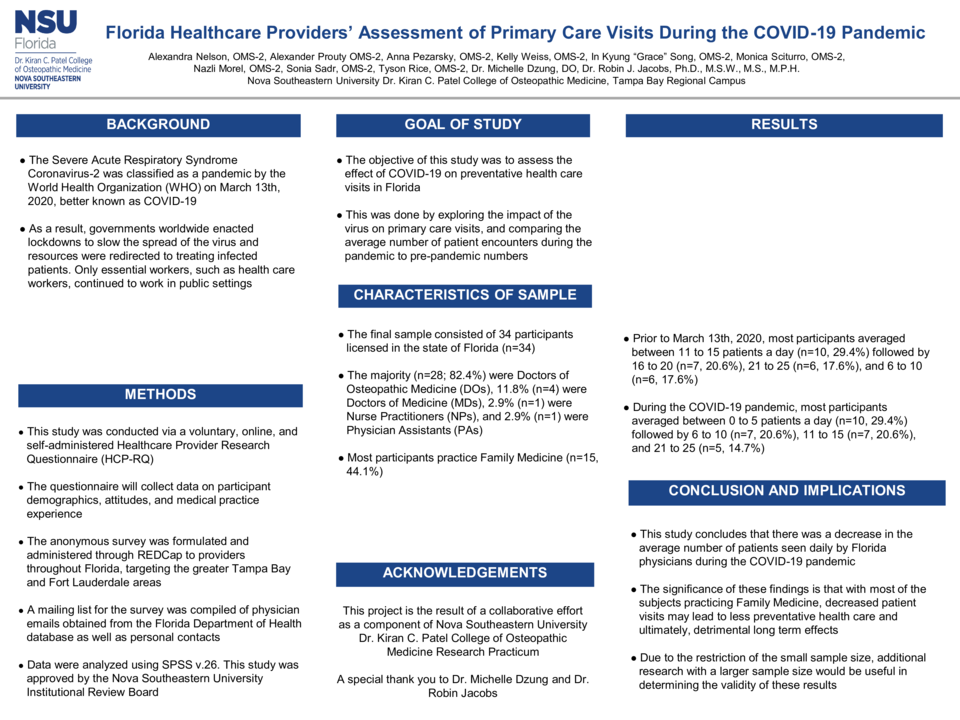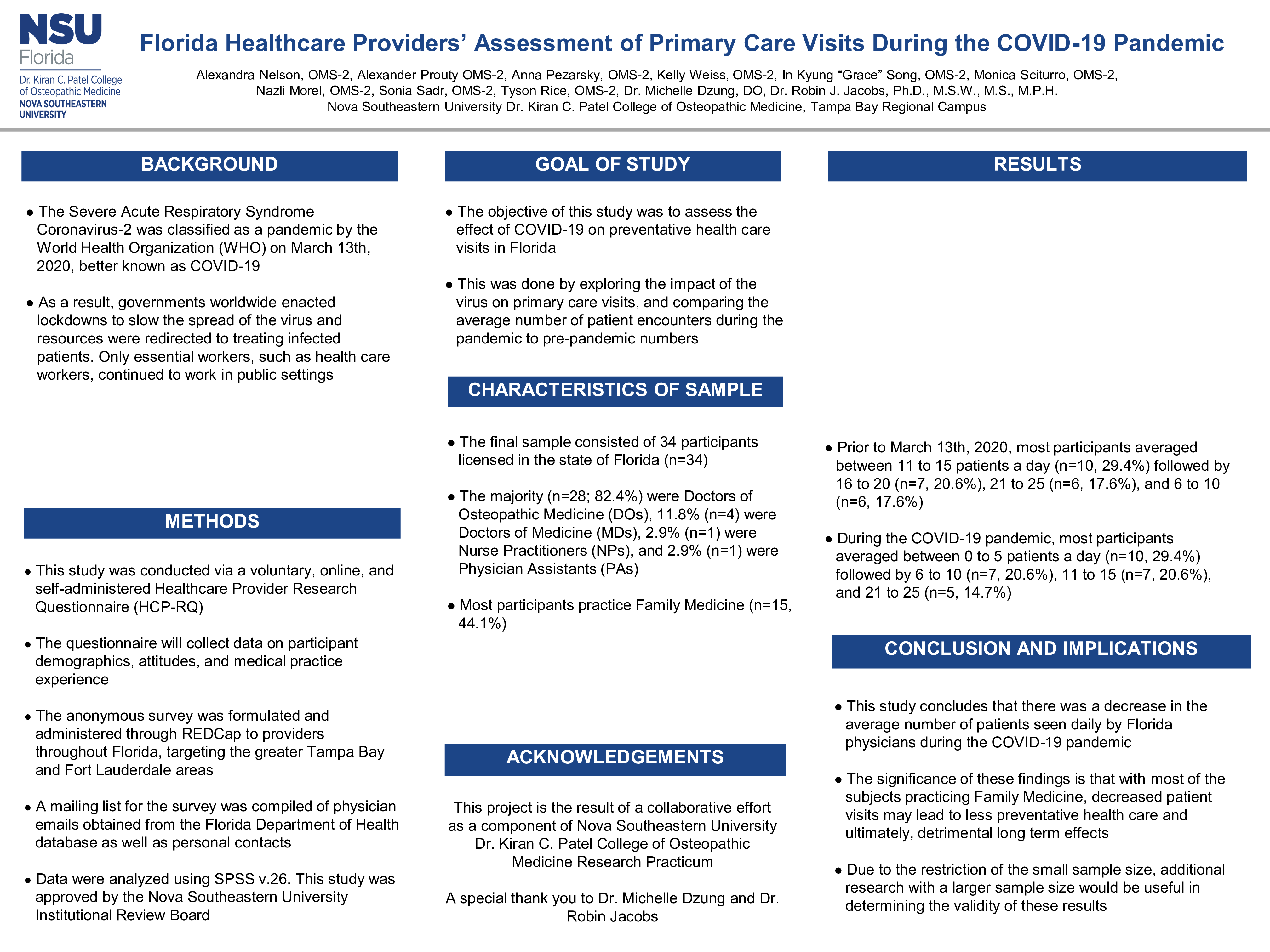Abstract
The Severe Acute Respiratory Syndrome Coronavirus-2 was classified as a pandemic by the World Health Organization (WHO) on March 13th, 2020, and is better known as COVID-19. Governments worldwide enacted lockdowns to slow the spread of the virus and resources were redirected to treating infected patients. Only essential workers, such as health care workers, continued to work in public settings. We conducted a literature review prior in order to assess how COVID-19 had affected the management of chronic conditions, the patient’s willingness to present to their primary care office, and the providers ability to treat their patients. Regarding chronic conditions, one study found that 48% of providers rated overall chronic disease management as ‘fair’ and 28% as ‘good’ during the pandemic with diabetes being the most significantly impacted. Another study also found a decrease in preventative imaging studies like mammography (92%) and nuclear medicine (78%). Additionally, there was a loss of non-verbal assessment skills relied on by many physicians with the switch to tele-medicine appointments. Multiple studies discussed the significant increase in telemedicine appointments in both urgent (135%) and non�urgent care visits (4345%). From this literature review, we decided to assess the effect of COVID-19 on preventative health care in Florida by exploring the impact of the virus on primary care visits and comparing the average number of patient encounters during the pandemic to pre-pandemic numbers. This study was conducted via a voluntary, online, and self-administered Healthcare Provider Research Questionnaire (HCP-RQ). The questionnaire collected data on participant demographics, attitudes, and medical practice experience. The anonymous survey was formulated and administered through REDCap to providers throughout Florida. A mailing list for the survey was compiled of physician emails obtained from the Florida Department of Health database as well as personal contacts. Data were analyzed using SPSS v.26. This study was approved by the Nova Southeastern University Institutional Review Board. The final sample consisted of 34 participants licensed in the state of Florida (n=34). The majority (n=28; 82.4%) were Doctors of Osteopathic Medicine (DOs), 11.8% (n=4) were Doctors of Medicine (MDs), 2.9% (n=1) were Nurse Practitioners (NPs), and 2.9% (n=1) were Physician Assistants (PAs). Most participants practice Family Medicine (n=15, 44.1%). Prior to March 13th, 2020, most participants averaged between 11 to 15 patients a day (n=10, 29.4%) followed by 16 to 20 (n=7, 20.6%), 21 to 25 (n=6, 17.6%), and 6 to 10 (n=6, 17.6%). During the COVID-19 pandemic, most participants averaged between 0 to 5 patients a day (n=10, 29.4%) followed by 6 to 10 (n=7, 20.6%), 11 to 15 (n=7, 20.6%), and 21 to 25 (n=5, 14.7%). Additionally, 52.9% of providers said that they observed less preventative care screenings during the COVID-19 pandemic with 29.4% reporting ‘somewhat less’ and 23.5% reporting ‘a lot less’. 29.4% reported the same amount. This study concludes that there was a decrease in the average number of patients seen daily by Florida physicians during the COVID-19 pandemic. Of the patients seen by the physicians that responded, less than 20% were uninsured or underinsured. The majority of patients seen were adults ranging from 36 to 64 years old.








